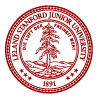ch 3 reading response
I really like Artful Design’s Principle 3.5: Build complexity from simplicity. Design can often feel extremely intimidating when only the final product is observed and the process of creation is obscured. Just like the example in the book of the rainbow flares, complexity is just an amalgamation of many simple building blocks, and knowing that makes both design and engineering feel accessible.
In my computer science background, a fundamental concept underlying all of problem solving is the process of breaking down a complex problem into many simple problems, and building back up to a complex solution. This process demystifies relationships between moving parts, gives you clarity on what steps a problem requires, and allows for more modularization and scalability. I’ve practiced this concept for years as a result, and it’s cool to think about the same principle holding strong in artful design as well. Even something as simple as a lens flare would take a long time to reverse-engineer if one viewed the graphic as an end in itself -- how do you blur the inside and outside of a ring, but not the middle strip? However, after seeing it broken down into a ring superimposed on a blurred version of itself, it is almost comically trivial, yet just as captivating. The difference is that I know how it was created, and I know that I can do it too.
Building on top of this, the concept of combining the same simple building block is even more intriguing -- it’s almost as though certain patterns burst through when you allow for identical replication, and feels very founded in nature in that way. The graphic on page 110 of Artful Design perfectly captures this phenomenon -- we begin with a simple lens flare, and combine it in a few simple ways to produce a tiny alphabet. Then, we allow replication to occur, almost passively, and a beautiful holographic-feeling cloud of glowing whites just appears. If we tried to trace the location of each flare and isolate every instance of this underlying object, we would get lost in the complexity. The only way to understand that image is to think about its simple building blocks, how they are combined, and why they are combined like that. I think I’m going to try to implement a similar amalgamation of simple objects in my next design milestone and put this principle to practice.

